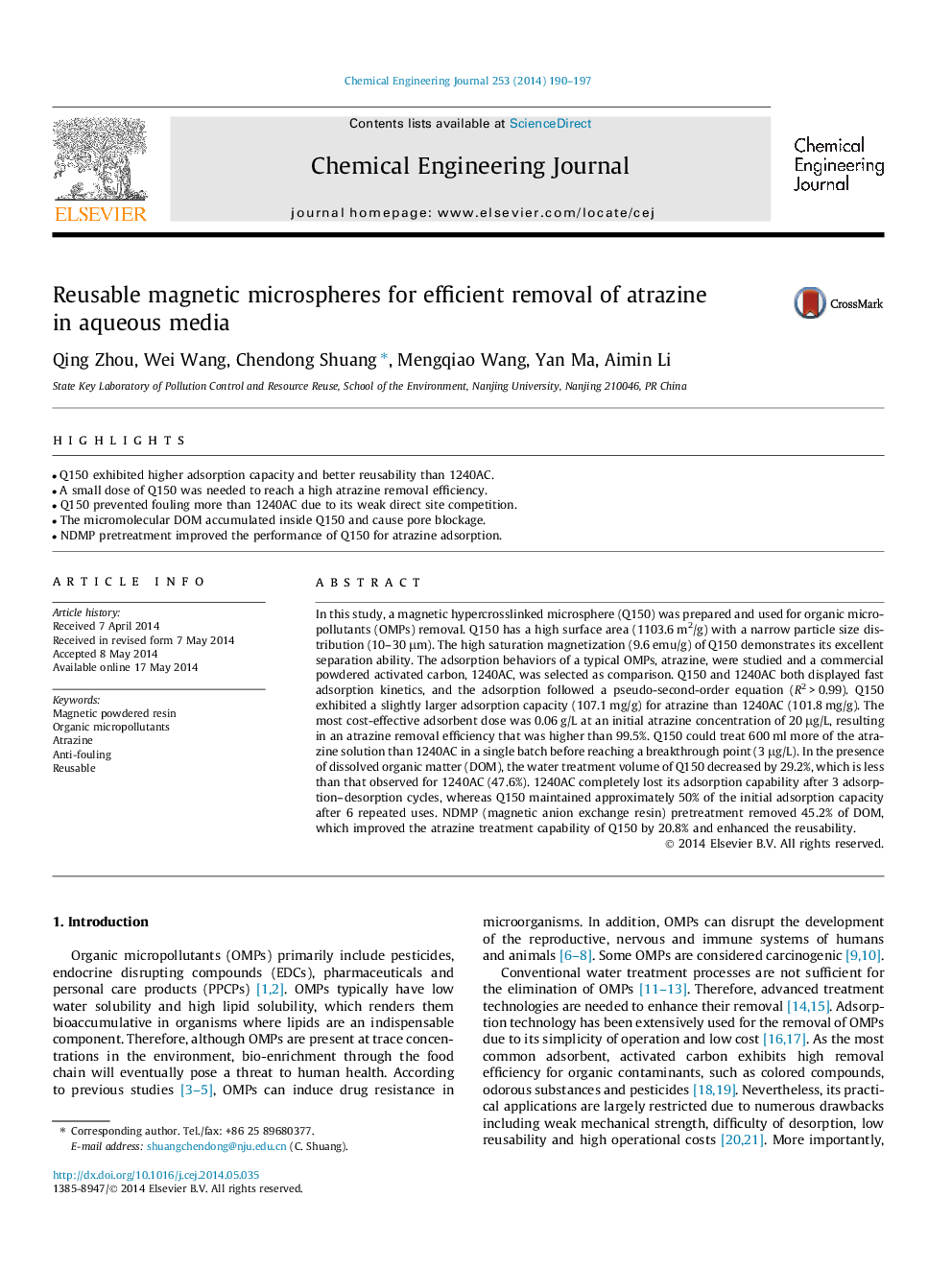| Article ID | Journal | Published Year | Pages | File Type |
|---|---|---|---|---|
| 147183 | Chemical Engineering Journal | 2014 | 8 Pages |
•Q150 exhibited higher adsorption capacity and better reusability than 1240AC.•A small dose of Q150 was needed to reach a high atrazine removal efficiency.•Q150 prevented fouling more than 1240AC due to its weak direct site competition.•The micromolecular DOM accumulated inside Q150 and cause pore blockage.•NDMP pretreatment improved the performance of Q150 for atrazine adsorption.
In this study, a magnetic hypercrosslinked microsphere (Q150) was prepared and used for organic micropollutants (OMPs) removal. Q150 has a high surface area (1103.6 m2/g) with a narrow particle size distribution (10–30 μm). The high saturation magnetization (9.6 emu/g) of Q150 demonstrates its excellent separation ability. The adsorption behaviors of a typical OMPs, atrazine, were studied and a commercial powdered activated carbon, 1240AC, was selected as comparison. Q150 and 1240AC both displayed fast adsorption kinetics, and the adsorption followed a pseudo-second-order equation (R2 > 0.99). Q150 exhibited a slightly larger adsorption capacity (107.1 mg/g) for atrazine than 1240AC (101.8 mg/g). The most cost-effective adsorbent dose was 0.06 g/L at an initial atrazine concentration of 20 μg/L, resulting in an atrazine removal efficiency that was higher than 99.5%. Q150 could treat 600 ml more of the atrazine solution than 1240AC in a single batch before reaching a breakthrough point (3 μg/L). In the presence of dissolved organic matter (DOM), the water treatment volume of Q150 decreased by 29.2%, which is less than that observed for 1240AC (47.6%). 1240AC completely lost its adsorption capability after 3 adsorption–desorption cycles, whereas Q150 maintained approximately 50% of the initial adsorption capacity after 6 repeated uses. NDMP (magnetic anion exchange resin) pretreatment removed 45.2% of DOM, which improved the atrazine treatment capability of Q150 by 20.8% and enhanced the reusability.
